#burial chamber
Text



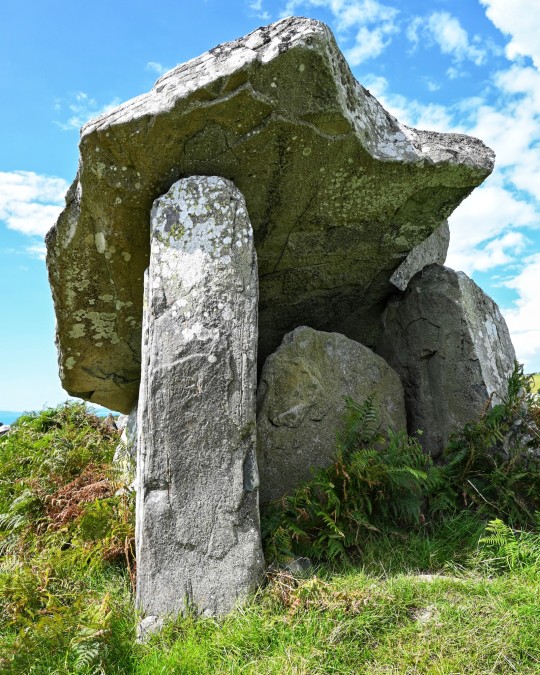

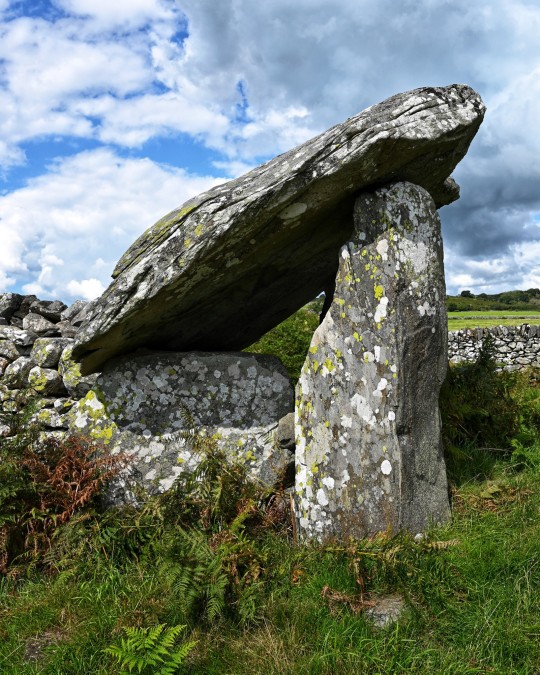
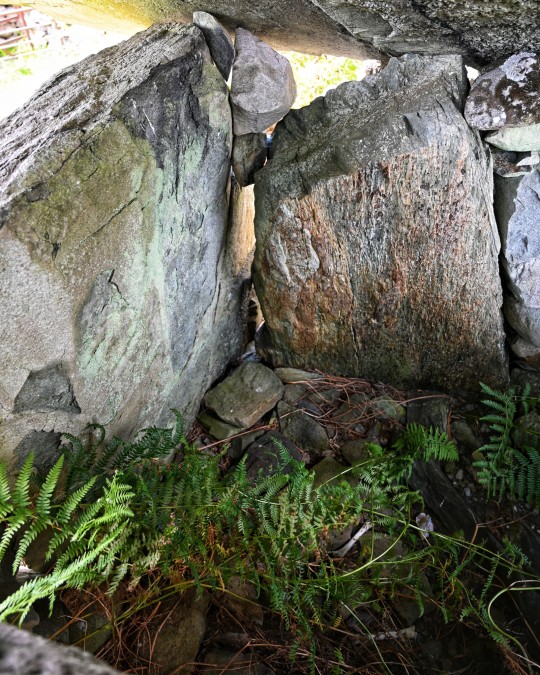



Gwern Einion Prehistoric Burial Chamber, Pensarn, Wales
#ice age#stone age#bronze age#copper age#iron age#neolithic#mesolithic#calcholithic#paleolithic#prehistory#prehistoric#megalith#megalithic#burial chamber#burial ground#burial mound#capstone#archaeology#ancient sites#Wales
738 notes
·
View notes
Text
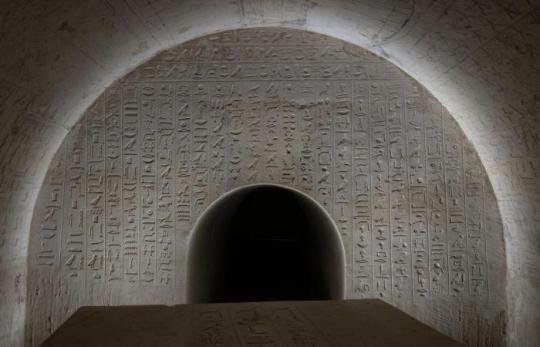
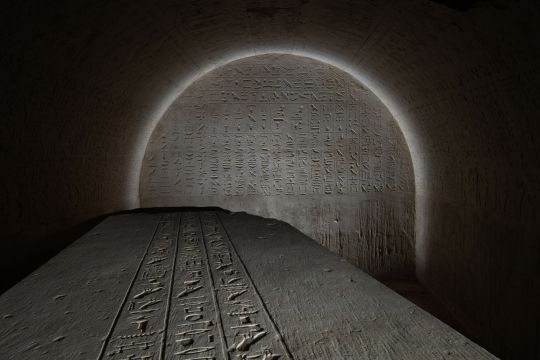
The Tomb of a Royal Scribe Discovered in Egypt
Czech experts have made another important discovery in the Egyptian archaeological site in Abusir. They found the hitherto unexplored tomb of the royal scribe Dzhehutiemhat, which is richly decorated in the form of many hieroglyphic texts and images. They mainly consist of ritual and religious texts, which were supposed to ensure the soul of the deceased an eternal life in the next world.
In April and May of this year, another part of field research by Czech Egyptologists regarding shaft tombs from the middle of the first millennium BC took place in Abusir, Egypt. It was here that the archaeological team of the Czech Institute of Egyptology of the Faculty of Arts of Charles University discovered the tomb of a hitherto unknown dignitary from the time of the Persian invasion of Egypt.
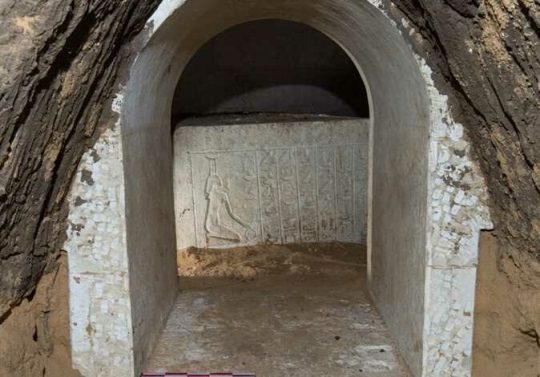

“It is a richly decorated shaft tomb of medium size, whose owner, a certain Džehutiemhat, held the office of royal scribe,” explains Ladislav Bareš, who has been coordinating the research of Abusir shaft tombs for a long time.
From the tomb, the above-ground part of which was destroyed already in ancient times, only the main shaft was preserved, at the bottom of which lay a burial chamber made of limestone blocks at a depth of 14 meters. Access to it was provided by a small, more northerly shaft and a narrow corridor approximately three meters long connecting the access shaft with the burial chamber.
For reasons still unknown, this access shaft was largely filled with several dozen decorated limestone blocks, originating from the dismantled above-ground part of the nearby majestic tomb of General Menechibnekon.
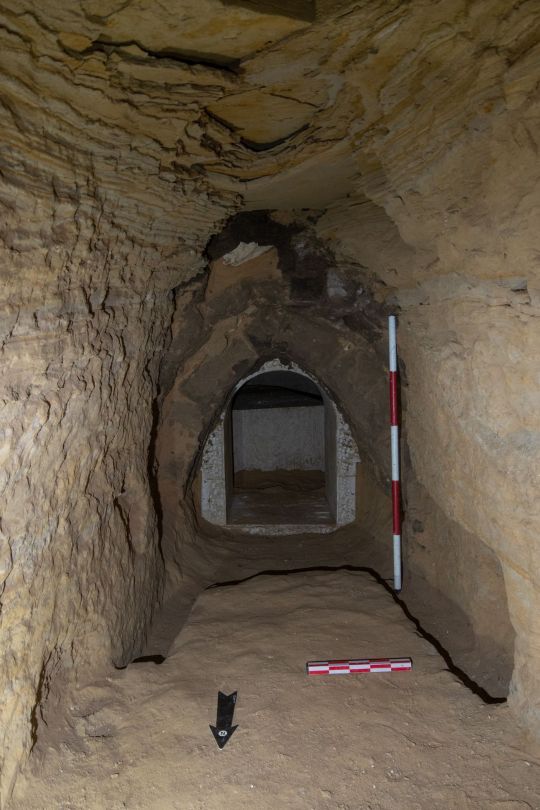
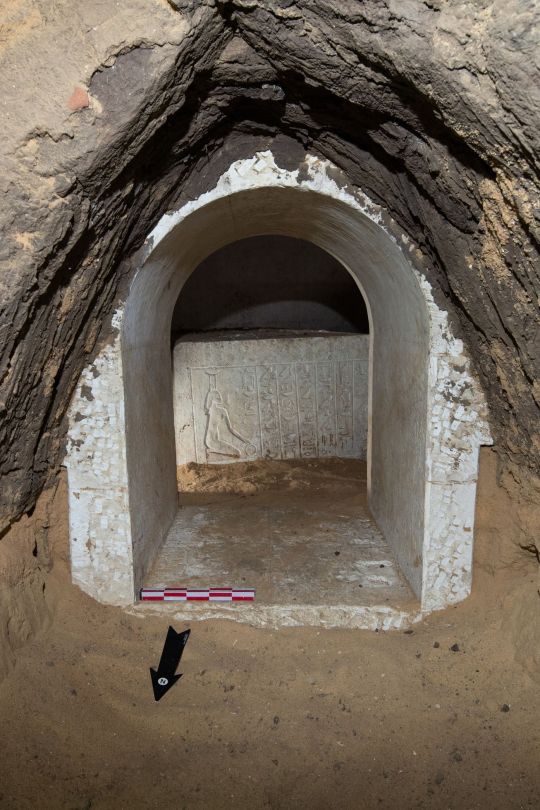
A tomb with rich decoration
The burial chamber is richly decorated with texts and other scenes. A long sequence of incantations against snakebite from the Pyramid Texts covers the north entrance wall. Interestingly, the snakes mentioned in these magical texts represented a potential danger, but could also serve as powerful protectors of the deceased and his mummy.
“While the entrance to the nearby Menechibnekon’s burial chamber was protected by the guardians of the gates of the 144th chapter of the Book of the Dead, in the case of Džehutiemhat, snakes from the Pyramid Texts play this role,” adds Renata Landgráfová, director of the Institute of Egyptology and an expert on the ancient Egyptian language and texts.
The south and west walls are covered with a sacrificial ritual and an extensive sacrificial list. On the ceiling of the burial chamber are depictions of the journey of the sun god Reo through the sky, first in the morning and then in the evening celestial bar. The depictions are accompanied by hymns to the rising and setting sun.
Inside the burial chamber covered with relief decoration is a large stone sarcophagus, which also bears hieroglyphic inscriptions and depictions of gods, both outside and inside. The lid is decorated with texts taken from the Book of the Dead, but also excerpts from the much older Pyramid Texts, which partially repeat sayings that also appear on the walls of the burial chamber.
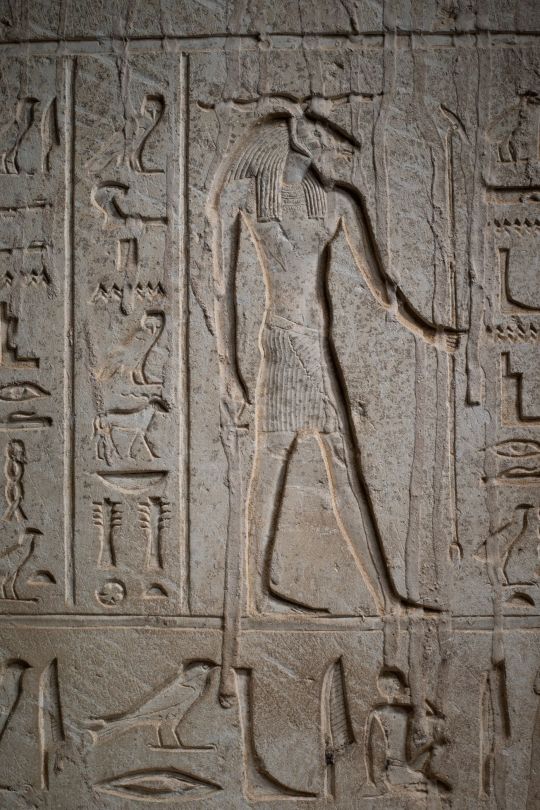
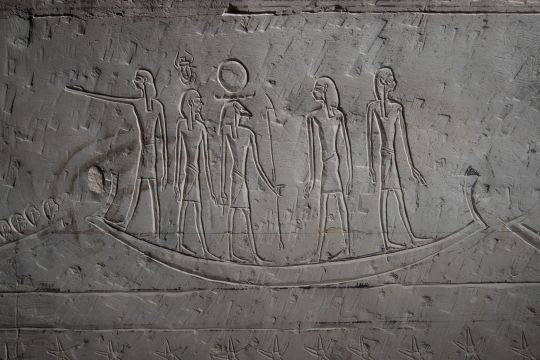
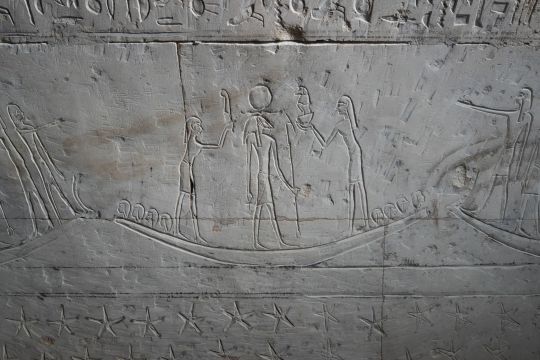
Ritual texts for eternal life
On the bottom of the inner wall of the sarcophagus bath, the goddess of the west, Imentet, is depicted, and its inner sides bear the so-called canopic sayings, spoken by this goddess and the earth god Geb. “The goddess of the west inside the sarcophagus represents the protector, guide and symbolic mother of the deceased,” explains Jiří Janák, who analyzes and interprets religious and magical texts as part of field research.
All the mentioned spiritual-ritual texts were supposed to ensure the deceased a smooth entry into a blissful and well-secured eternal life in the afterlife.
The tomb of the scribe Dzhehutiemhat was discovered almost empty, as it was robbed probably already in the 5th century AD, similar to other tombs in this burial ground.
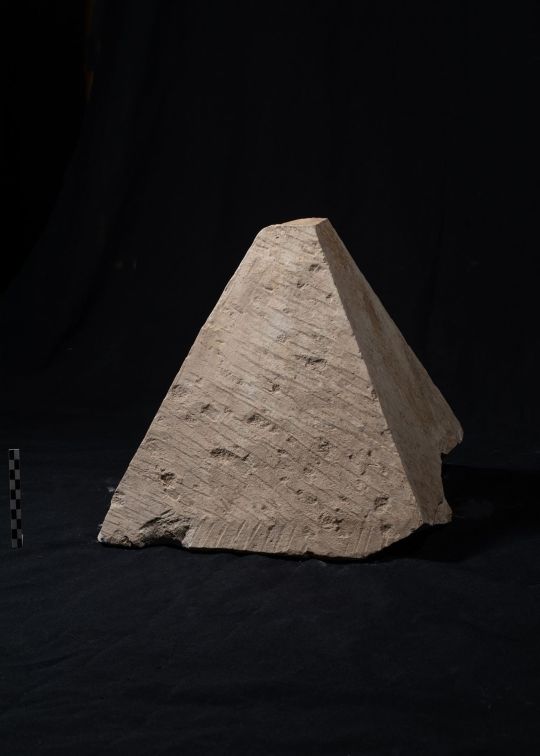
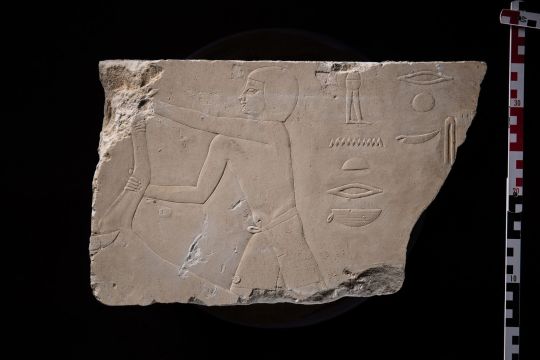

The deceased suffered from sedentary work
From the anthropological analysis of the skeletal remains, which was carried out by leading Egyptian experts, it was found that Dzhehutiemhat died at a relatively early age of around 25 years, he bore the signs of a kind of occupational disease (wear and tear of the spine during sedentary work) and suffered from severe osteoporosis, i.e. thinning of the bones.
The latter fact could place him in the family of other inhabitants of the Abusir shaft tomb burial, in whom the disease was also confirmed, such as the famous Iufaa, the owner of a nearby much larger tomb, whose unlooted burial chamber was discovered in 1996.
It is therefore possible that most of the owners of the tombs buried in this part of the Abusir necropolis belonged to one extended family, firmly anchored in the military elite of late Saiyan Egypt. However, Dzhehutiemhat’s mother probably came from completely different circles and a different part of Egypt at that time. Her two names can be translated as “Nubian” and “Fox”, while the latter is written in an unusual, most likely Berber form.
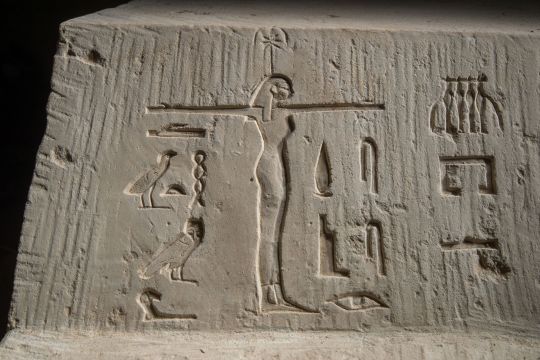
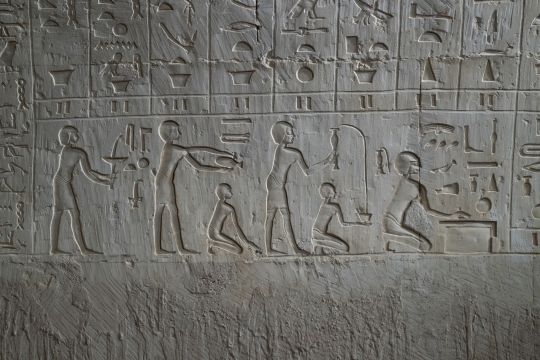
They also found a collection of pottery in the tomb. “The discovery of a large fragment of a Chian amphora with a perfectly smoothed edge is also very interesting, because the ancient looters probably used it as a shovel,” says Květa Smoláriková, who is an expert on Egyptian ceramics and Greek imports in the Czech team.
“The recently discovered tomb of the dignitary Džehutiemhat on the Abusír archaeological concession is the latest piece of knowledge in the mosaic of the history of ancient Egypt at the end of its glory in the late period, in the 6th century BC,” says Miroslav Bárta, director of Czech archaeological research in Abusír, about the discovery.
“The shaft tombs represent a special type of tombs of this time. They were created as a specific attempt by the ancient Egyptian elites for a renaissance and are based on the form of the tomb of King Djoser, the founder of the famous Old Kingdom, the time of the pyramid builders in the 3rd millennium BC,” he adds.


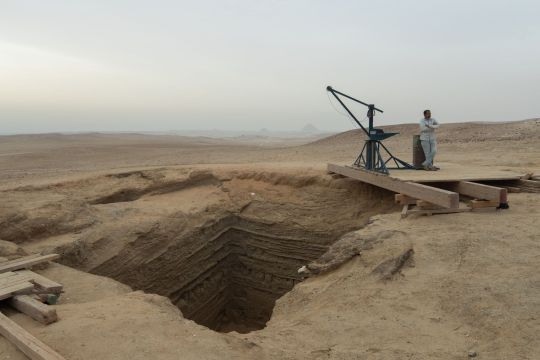
#The Tomb of a Royal Scribe Discovered in Egypt#Abusir Egypt#Dzhehutiemhat#first millennium BC#ancient tomb#ancient grave#ancient artifacts#burial chamber#Czech Institute of Egyptology#archeology#archeolgst#history#history news#ancient history#ancient culture#ancient civilizations#ancient egypt#egyptian history#egyptian art#long reads
277 notes
·
View notes
Text
The discovery of an immaculate 400-year-old tomb in Shanxi Province, China, resonates with the opulence and intrigue of a bygone era. This archaeological marvel is adorned with elegance and sophistication, unveiling the mysteries of the Ming Dynasty—an imperial majesty that offers a glimpse into the opulent lives of ancient Chinese royalty.
31 notes
·
View notes
Text

Equinox Ritual
#own photo#not my offerings#it was already there#this was at a neolithic burial chamber I visited yesterday#equinox#garland#wreath#spring#beginning of spring#nature#burial chamber#standing stones#lensblr#original photographers#photographers on tumblr
17 notes
·
View notes
Text


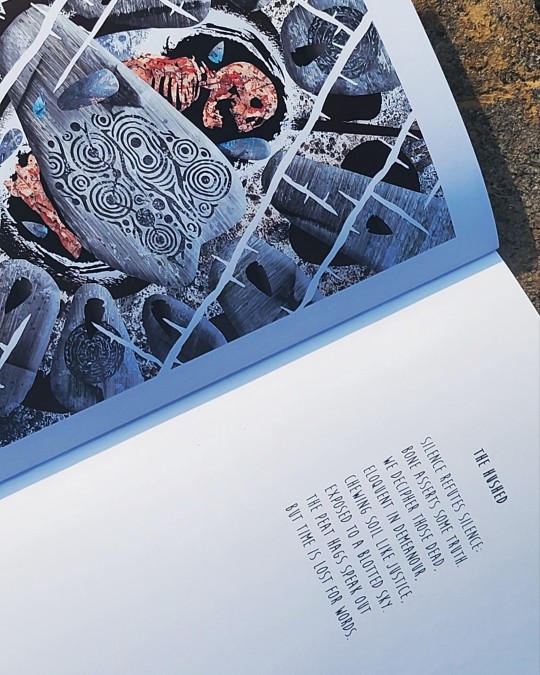
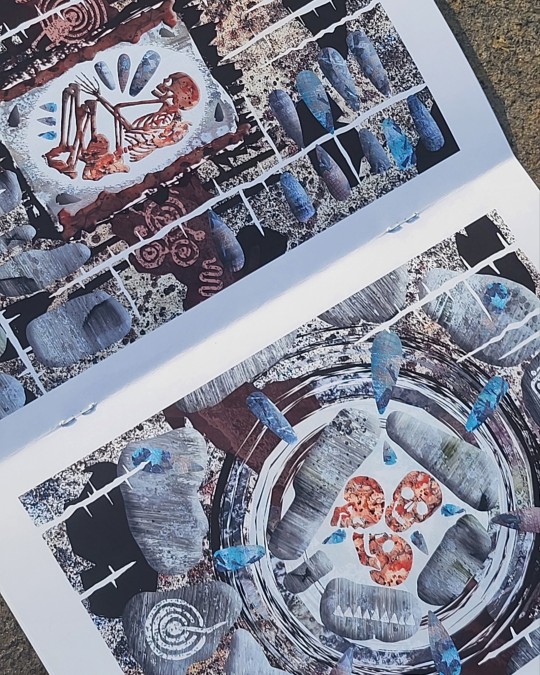
'The Hushed' Poetry and Art Pamphlet is out now on Etsy @silicontribesman
#poetry#original art#prehistoric#prehistory#burial chamber#burial mound#ritual#poem#original#artwork
38 notes
·
View notes
Photo
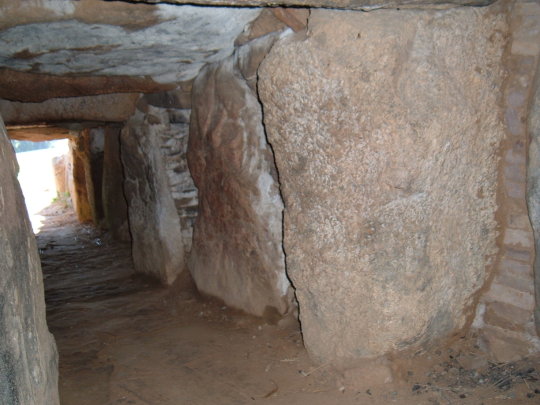
Klekkende Høj passage grave on the island of Møn in Denmark. View from the inside of the south tomb along the entrance passage

view looking north from southern end of tomb
#megaliths#archaeology#neolithic#funnelbeaker culture#prehistory#megalithic tomb#denmark#burial#burial chamber#funerary rites#passage grave#my upl
65 notes
·
View notes
Photo
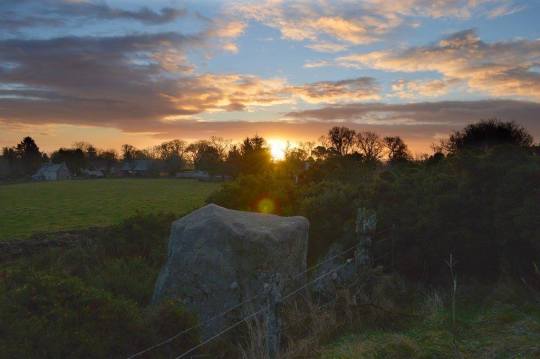
Clashmore, Midwinter Sunrise
An astronomical survey of about 70 Orkney-Cromarty round cairns in the Northern highlands suggested that the remains of the Clashmore burial chamber was aligned towards the midwinter sunrise. This was photographed at 9:20am on the 20th December 2013.
Clashmore is a scattered township in Assynt, in Sutherland, in the Highlands. It is situated on the Rubha Stoer, 10 km north west of Lochinver.
Pic from Canmore Rcahms but the original linkI posted years ago is now dead.
44 notes
·
View notes
Text
"My love is unique - no one can rival her, for she is the most beautiful woman alive. Just by passing, she has stolen away my heart."
- (Poetry found on the walls of Nefertari's burial chamber written by Ramesses II )
14 notes
·
View notes
Text
It doesn't say so, but this appears to be a previously unlooted tomb.
8 notes
·
View notes
Photo

Another gouache blob-study! I really like how the brushwork turned out in this one. :)
This is of Carreg Coetan Arthur Prehistoric Burial Chamber, Newport, Pembrokeshire, Wales.
Reference
8 notes
·
View notes
Text

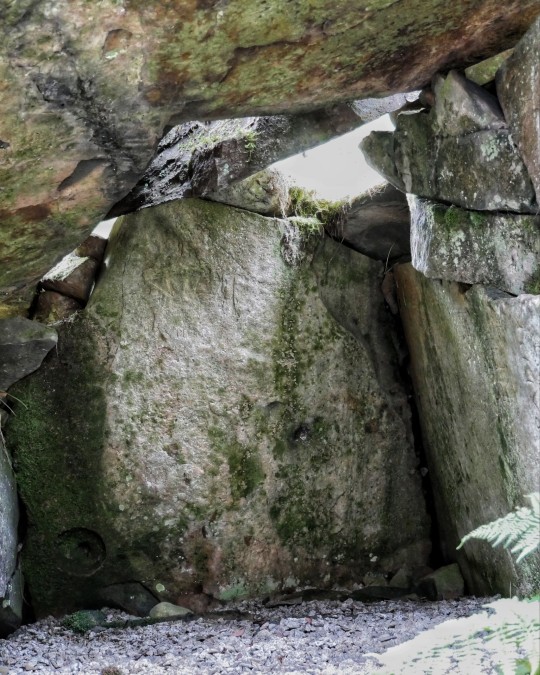


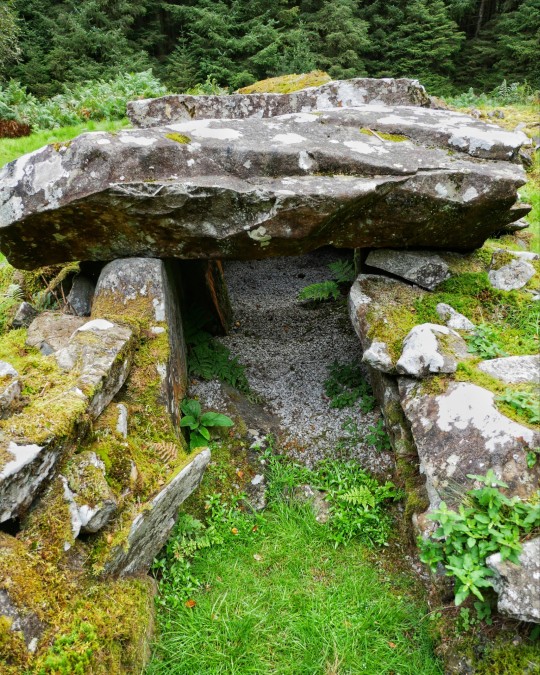

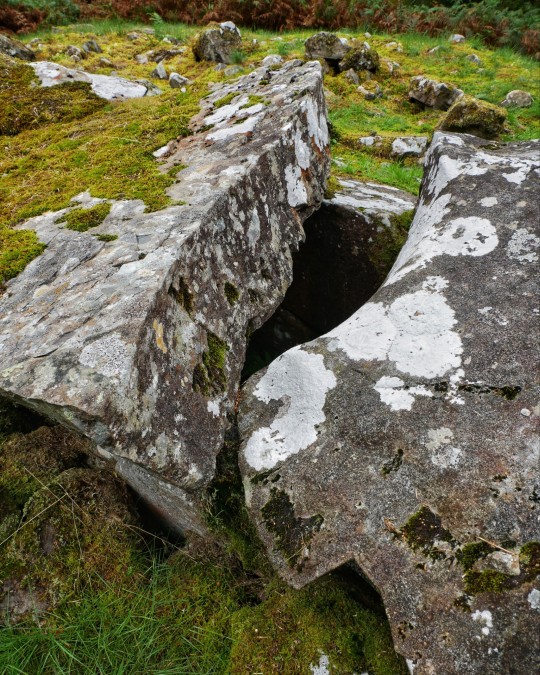
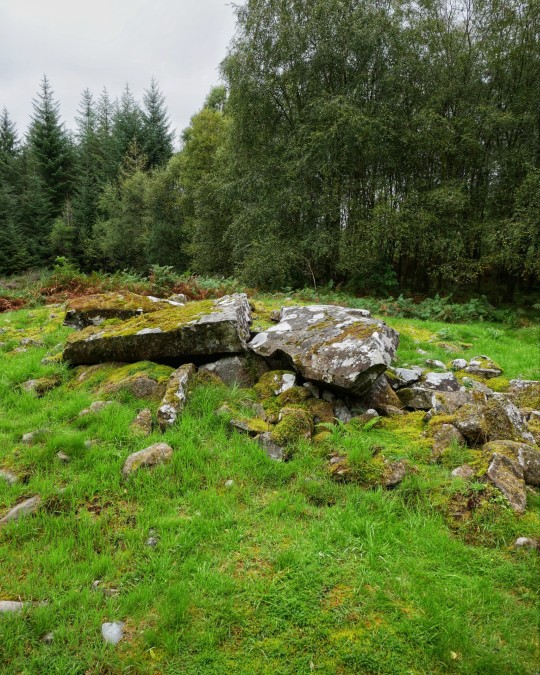


'The White Cairn Of Bargrennan' Prehistoric Chambered Cairn, Dumfries and Galloway, Scotland
#ice age#stone age#bronze age#copper age#iron age#neolithic#mesolithic#calcholithic#paleolithic#prehistoric#prehistory#megalithic#megalith#burial mound#burial chamber#burial ground#cairn#chambered cairn#archaeology#Scotland#ancient sites#ancient living#ancient craft#capstone#outdoors#ritual#monument
485 notes
·
View notes
Photo




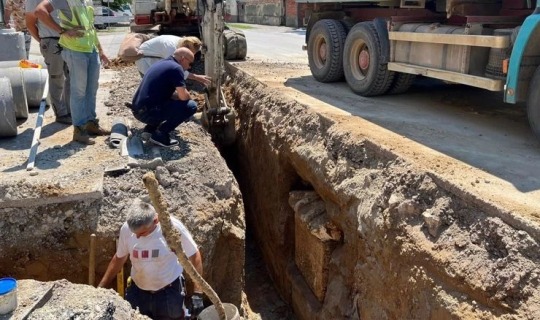
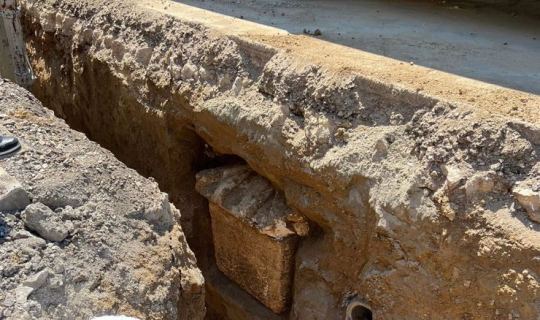


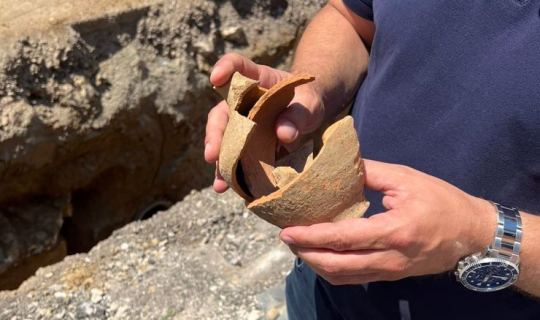
Roman Sarcophagus Found in Croatia
A stone sarcophagus from the Roman era was found during construction work in Zvonarska street in Vinkovci, Croatia. Because of damage to the lid, the sarcophagus is believed to have been looted in ancient times.
In addition to the stone sarcophagus, the archaeologists also found two masonry graves and one cremation grave.
Archaeologists reported by the 'Luxurious' cover of the sarcophagus, it can be concluded that it is the grave of a very wealthy person.
#Roman Sarcophagus Found in Croatia#ancient grave#ancient tomb#burial chamber#ancient sarcophagus#archeology#archeolgst#ancient artifacts#history#history news#ancient history#ancient culture#ancient civilizations#roman empire#roman history
33 notes
·
View notes
Text
A parking lot turned time machine! Nara's latest excavation near the famed Horyuji Temple unveils an elite Kofun tomb from the 6th century, sparking questions about its connection to the temple's construction and ancient burial customs.
26 notes
·
View notes
Photo
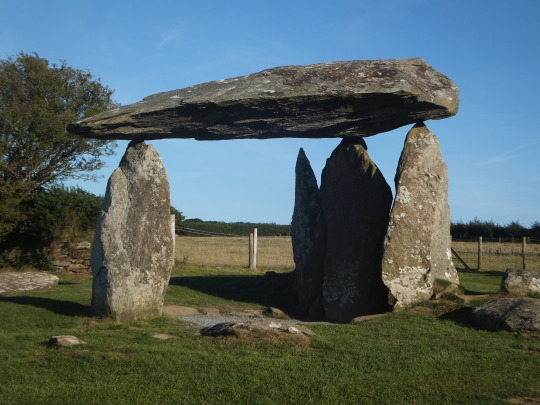
Pentre Ifan (Ifan’s Village) Burial Chamber
#own photo#I started writing loads in the tags#but I want it as an actual post I think#burial chamber#Pentre Ifan#Pembrokeshire#trip#standing stones#dolmen#ancient#folktales#adventure#nature#landscape#lensblr#original photographers
98 notes
·
View notes
Text

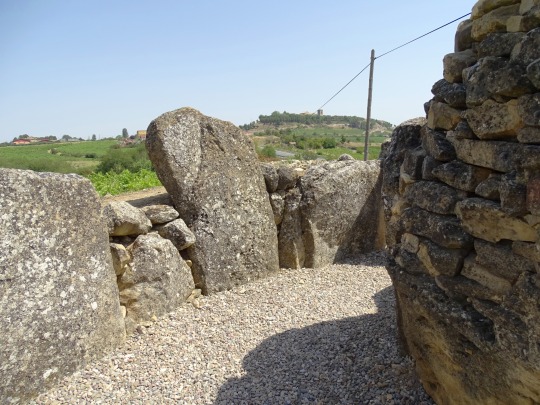
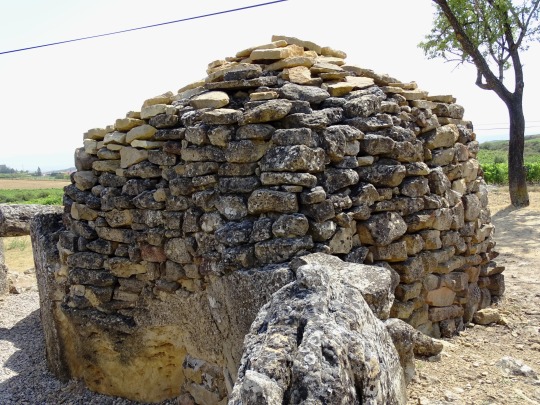
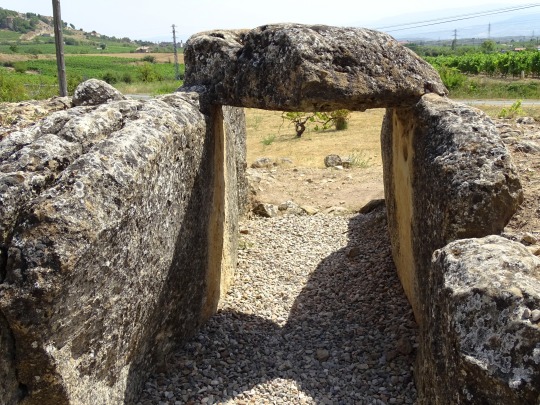



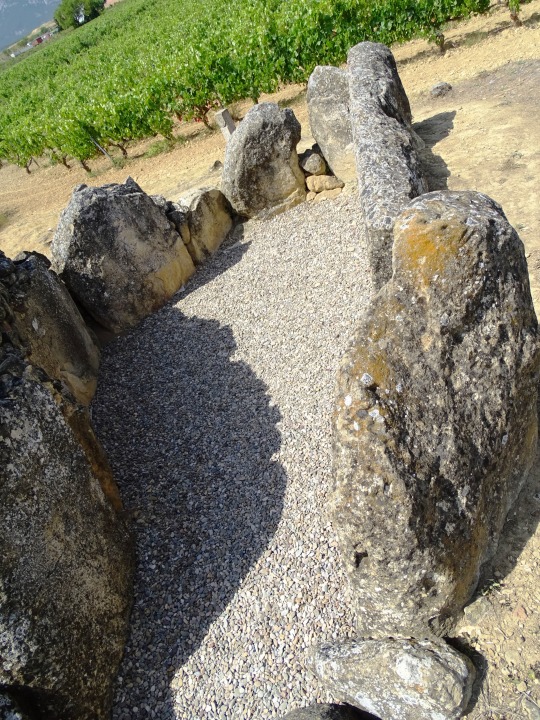



Dolmen of San Martín, Spain (No. 3)
Under one of the fallen slabs in the dolmen chamber were found three funerary stele made of sandstone that must have been lined up with orientation from south to north and located contiguously giving rise to the hypothesis that these three stele presided over the place where the individuals buried in the first stage of use of the dolmen were deposited. The stelae measure about 60 centimeters wide by 65 high and 15 thick.
The carbon 14 dating of the remains of human bones and the objects of the trousseau made of bone resulted in two distinct periods, the human remains are located within the final Neolithic, about 4900 years ago, those belonging to the idols-spatula (some of them could not be dated because they did not have collagen to perform the carbon 14 test) resulted, for one of the pieces, an antiquity of 5920 + 40BP years placing it in an ancient period of the Neolithic and for the other piece, an antiquity of 5380 + 40BP years placing it in the an average period of the Neolithic. Another piece analyzed was the punch that gave an age of 4650 + 30BP years placing it in the Chalcolithic stage. The dating of the objects located in the ancient and middle Neolithic open an unknown about its use, on the one hand the hypothesis of in care of the pieces in the environment of the community for more than 1000 years and its deposit as an offering in one of the burials or the possibility that the piece had been made with old bones with 1000 years old, The hypothesis considered most feasible is that they belong to burials carried out at that time and that the installation continued to be used later, giving the place a special, sacred character for the community over time.
After the excavation and study, a restoration intervention was carried out on the monument that consisted of replacing the fallen slabs in their place and placing mortars between the orthostats. The only lintel that maintained its original location in the corridor was also fastened.
Source: Wikipedia
#Dolmen of San Martín#Rioja Alavesa#Basque Country#Neolithic#archaeology#España#Spanish history#Southern Europe#Northern Spain#tourist attraction#travel#original photography#landmark#summer 2022#burial chamber#free admission#landscape#countryside#vineyard
2 notes
·
View notes
Photo

Burial Chamber | Symbolic Flesh Entombed | 2023
Australian Old School Death Metal
Artwork by Headsplit Design
https://bitterlossrecords-au.bandcamp.com/album/symbolic-flesh-entombed
#Burial Chamber#Symbolic Flesh Entombed#Australian Death Metal#AUDM#Death Metal#Old School Death Metal#OSDM#music#band#art#artwork#artist#Headsplit Design#Bitter Loss Records
2 notes
·
View notes